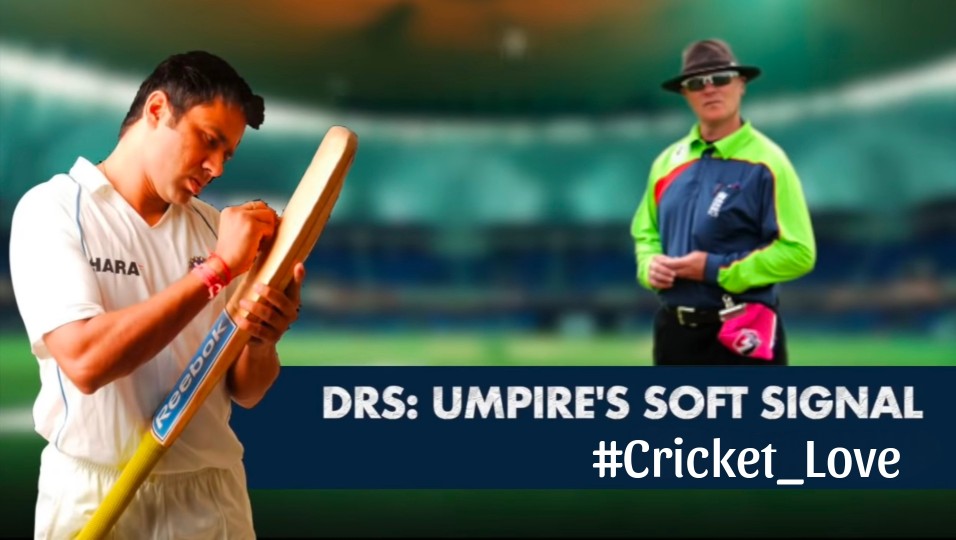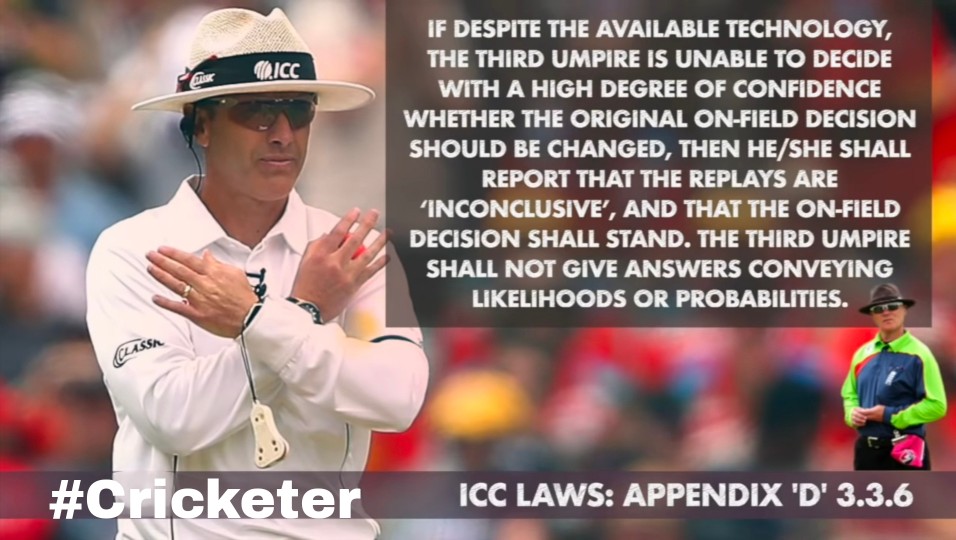Cricket Umpire Soft Signal: Cricket a game steeped in tradition and governed by a myriad of rules, has always relied on the discerning eyes of its umpires to make crucial decisions on the field. Among the various tools in an umpire’s kit, the “soft signal” has emerged as a topic of debate and intrigue. Explore the captivating realm of the “Cricket Umpire Soft Signal,” where split-second decisions unfold on the field.
As the heartbeat of fair play, the soft signal adds a layer of intrigue to the game, revealing the delicate balance between precision and intuition in the world of cricket officiating. Join us on a journey where every gesture holds the power to sway the course of a match, making the soft signal an indispensable element in the drama of cricket. In this article, we delve into the origins of cricket umpire signals, specifically exploring the nuances of the soft signal rule.
Origins of Cricket Umpire Soft Signal

Cricket umpire signals have a rich history, tracing their roots back to the early days of the sport. Originally, communication between umpires and players was limited, prompting the need for a standardized set of gestures to convey decisions. The first official code of signals was introduced in the 19th century, providing clarity in a game where split-second judgments could alter its course.
What is Umpire Soft Signal Rule?
The umpire soft signal rule is a relatively recent addition to the cricketing lexicon. Introduced to address the challenges posed by inconclusive Decision Review System (DRS) outcomes, the soft signal is a preliminary indication given by the on-field umpire before referring a decision to the third umpire. This initial signal is crucial, as it sets the tone for the DRS review.
What Are Soft Signals?
Soft signals are essentially the on-field umpire’s initial judgment on a catch or any other decision under review. These signals are called “soft” because they are subject to review by the third umpire, who uses various technological aids, including ball-tracking and ultra-motion cameras, to make a more informed decision. The soft signal, therefore, acts as a starting point for the DRS process.
Has Soft Signal Been Scrapped?
The debate surrounding the efficacy of the soft signal reached its zenith at various points in cricketing history. While some argue that it adds an element of subjectivity to the decision-making process, proponents assert that it provides on-field officials with a degree of autonomy. As of the latest developments, the soft signal has not been scrapped, but discussions within the cricketing community continue.
Can I Carry Cricket Bat in Flight
What Umpire Signals Mean
Understanding cricket umpire signals is essential for players, spectators, and even those new to the game. Umpires employ a range of gestures to communicate decisions, from the classic raised finger indicating an out to the more complex signals associated with no-balls, wides, and leg byes. These signals are designed to ensure clarity and transparency in the game.

Why Do Cricket Umpires Use Hand Signals?
Hand signals in cricket serve a dual purpose. Firstly, they provide a swift and clear means of communication between umpires and players on the field, eliminating any language barriers. Secondly, they contribute to the overall spectacle of the game, offering fans a visual language that adds to the drama and excitement.
Signs of Umpire in Cricket
Cricket umpires employ a diverse array of signals, each with a specific meaning. A raised index finger signifies a batsman’s dismissal, while both arms extended horizontally indicate a boundary. From signaling a no-ball with an outstretched arm to mimicking a bye with a tapping motion, the signs of umpires in cricket form a crucial aspect of the game’s visual narrative.
India vs England, 2021
During a Test match, the on-field umpire gave a soft signal of “out” for a catch claimed by the fielding team. The third umpire, after reviewing the footage, found inconclusive evidence to overturn the decision, leading to a heated debate on the reliability of soft signals
Australia vs South Africa, 2022
In an ODI, the soft signal became a point of contention when the on-field umpire gave a soft signal of “not out” for a close catch. The third umpire, however, overturned the decision based on conclusive evidence, sparking discussions on the consistency of the decision-making process.
Pakistan vs West IndiesT20-2023
A contentious catch during a T20 match resulted in the on-field umpire giving a soft signal of “out.” The third umpire upheld the decision, but post-match analysis revealed a technical glitch in the third umpire’s equipment, casting doubt on the accuracy of the decision.
New Zealand vs Sri Lanka, 2022
In a crucial T20 encounter, a catch was claimed with a soft signal of “out.” The third umpire, after multiple replays, decided to stay with the on-field call, leading to widespread criticism as many felt there was insufficient evidence to confirm the dismissal.
Bangladesh vs Australia, 2023
During a limited-overs match, a catch in the outfield resulted in a soft signal of “out.” The third umpire, facing a lack of conclusive evidence, chose to give the batsman the benefit of the doubt, prompting discussions on whether soft signals should be used judiciously in such situations.
Conclusion About Soft Signal Umpire Decision
Cricket umpire signals, including the soft signal, have evolved over time to meet the demands of a dynamic and technologically advanced era. While debates surrounding the soft signal’s relevance persist, its place in the game prompts a broader discussion on the delicate balance between tradition and innovation in cricket. Understanding the origins and intricacies of these signals enriches the cricketing experience for players and fans alike.
In conclusion, the concept of the cricket umpire’s soft signal adds an intriguing layer to the game, fostering a delicate balance between on-field decisions and technology. While it sparks debates and discussions, it ultimately emphasizes the human element in cricket, making each match a riveting blend of skill, strategy, and the ever-present unpredictability that defines this beautiful sport.


3 thoughts on “Cricket Umpire Soft Signal – from the beginning till 2024”
Comments are closed.